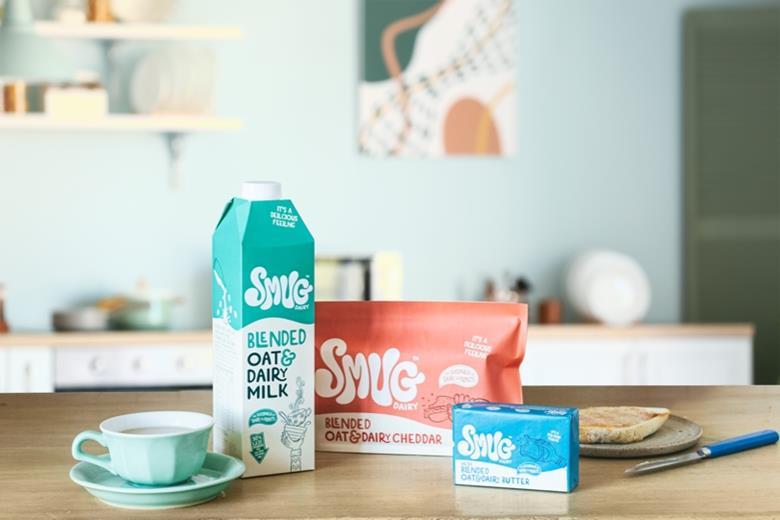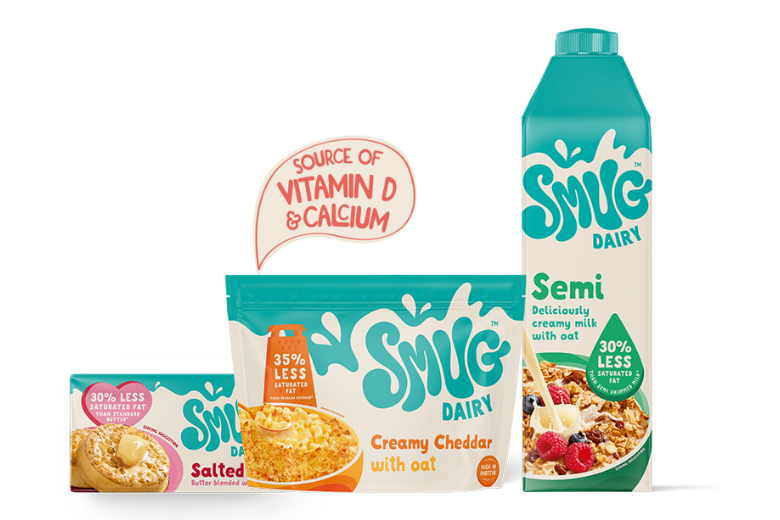The Way Forward for Hybrid Foods?
In our previous article, we explored the insights from the HMT Hybrid Foods webinar together with Gira, uncovering the key barriers and opportunities in this emerging space. We learned that many hybrid products struggle because they either stay stuck in niche segments or fail to meet clear consumer needs. To succeed, hybrid foods must be positioned with purpose, solve real dilemmas, and earn a trusted place in consumers’ daily lives.
► Now, it’s time to move from insight to action.
Blend in or Stand Out?
A key strategic question posed in HMTs Hybrid Foods webinar together with Gira, was whether hybrid products should integrate seamlessly into existing categories or differentiate themselves as hybrid. Should you blend in a food category, like the spread Bregott by Arla, where you created a new ”spreadable butter” product by blending butter with rapeseed oil, but you don’t talk about the hybrid, only the benefit? Or should you own the category, like Smug Dairy by Kerry Dairy, which confidently position itself as hybrid oat-dairy product.
Smug Dairy – A Real-World Example of Strategic Blending
A standout example of hybrid positioning is Smug Dairy by Kerry Dairy, a new range of blended oat and dairy products launched in the UK. Introduced as a ‘category-first’ innovation, Smug Dairy blends traditional dairy with oats to offer improved nutrition, taste, and sustainability in one product. Rather than hiding the hybrid aspect, Smug Dairy places it front of packaging, proudly stating it delivers the ‘good stuff from both worlds’: the creaminess of milk and the benefits of oats. This clarity and confidence in positioning show how hybrid foods can move beyond niche and into mainstream appeal. Kerry’s move signals a broader industry trend toward making hybrid products more consumer-relevant, not just ingredient-driven. This kind of innovation embodies a product with a clear benefit, a clear identity, and a clear place in the category. Hybrid food innovation must be consumer-driven, solving real needs rather than just blending ingredients for the sake of it.


Interestingly in March 2025 Smug Dairy has also updated its communication with a new look—from initially emphasizing its hybrid nature to now leading with the tangible consumer benefits, such as creamier taste and improved nutritional value, signaling a maturing approach in branding that aligns more closely with everyday consumer priorities.
The way forward for hybrid foods is to Establish and Promote the category itself
Similar to hybrid cars, positioning hybrid foods as a distinct category with a clear purpose, could be a powerful way to educate consumers and drive adoption. Just as hybrid cars combine gasoline and electric power for efficiency, hybrid foods blend animal and plant ingredients for better health, sustainability, and taste. Positioning hybrid as a distinct category could encourage more brands and products in the space, increasing recognition as a clear ”future driven” market segment.
First focus must be on the category before the brand can be established

In this case, the river refers to the food categories as defined by consumers. By promoting the idea of hybrid foods as a reconizable category similar to hybrid cars, it could become a mainstream movement rather than just a niche product. By educating on the benefits of hybrid foods it would establish a “best of both” category in between plant based and animal based, and an option for progressive early mass market consumers.
With HMT’s FourFactors Brand Acceleration System®, applying New Segment Creation, Whole Category Substitution and Leverage Hidden Nutritional Assets as market entry strategies, Hybrid Foods would become the mainstream alternative. Hybrid products can perform equal and better than conventional ones on key purchase drivers like taste, texture, price, nutritious values, and sustainability. Better for you without giving up what you love!
Market the products as ‘improved’ on key category drivers, to create a familiar yet better alternative. Important is to ensure that the product mimics the conventional alternative as closely as possible. This keeps the taste and texture that people love, while making it healthier and more sustainable. Hybrid foods have the potential to bridge the gap between sustainability and mainstream appeal, but success depends on clear category positioning and consumer demand. By establishing ‘Hybrid Foods’ as a recognizable category, just like hybrid cars, brands can drive adoption of a new clearly defined segment and create a sustainable market.
Strategic Takeaways for Hybrid Foods
- Establish the Hybrid Category First:
- Like hybrid cars, hybrid foods need to be positioned as a distinct category with a clear purpose, offering a “best of both worlds” benefit across taste, health, and sustainability.
- “You must have a river before you can launch your boat.” – category comes before brand.
- Own the Hybrid Identity or Blend In:
- Brands can choose to blend into existing categories (like Bregott by Arla) or stand out by highlighting their hybrid nature (like Smug Dairy by Kerry Dairy).
- Smug Dairy shows a successful case of confidently embracing the hybrid label and later shifting focus from the hybrid aspect to consumer benefits (creaminess, lower saturated fat).
- Consumer-Driven Innovation:
- Hybrid products must solve real consumer needs rather than merely combining ingredients.
- Taste, texture, nutritional value, and sustainability are key drivers to emphasize.
- Target Early Mass Market Consumers:
- Hybrid foods should appeal to progressive consumers looking for healthier and more sustainable alternatives that still deliver on taste and familiarity.
- Position as ‘Improved’ Conventional Products:
- Market hybrid products as better versions of familiar foods—mimicking traditional taste and texture while improving health and sustainability credentials.
- Mainstream Potential with Right Framing:
- With clear benefits, identity, and place in the market, hybrid foods can transition from niche to mainstream success.
Partner with HMT to Lead the Hybrid Food Movement
At HMT, we specialize in turning insights into action — transforming food and health brands into category leaders. Whether you’re launching your first hybrid product or repositioning an existing one, our FourFactors® Brand Acceleration System helps you navigate the complex food landscape with precision.
From market entry strategy and category creation to consumer insight and brand positioning, we offer tailored support to increase the success factors for your innovation. Let’s work together to define and dominate the hybrid category.
Get in touch with our experts today and start building a hybrid food brand that stands out and scales.